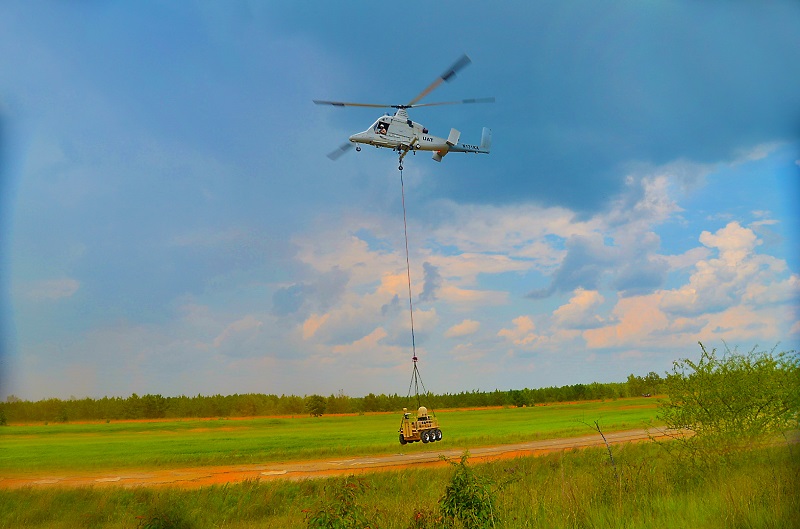
Machine-waged warfare is closer at hand than previously anticipated. Recently, Lockheed Martin, in collaboration with the U.S. Tank Automotive Research, Development and Engineering Center (TARDEC), has just completed the first fully autonomous resupply, reconnaissance, surveillance, and target-acquisition demonstration using its K-MAX helicopter, Squad Mission Support System (SMSS) unmanned ground vehicle, and Gyrocam optical sensor.
The demonstration was part of an 18-month initiative called the “Extending the Reach of Warfighters through Robotics,” featuring technology designed to automate the dangerous aspects of combat normally reserved for human fighters.
You may recall the K-MAX helicopter from 2011, when it gained world-wide notoriety as the first unmanned aircraft system to perform an in-combat resupply mission, when it resupplied the U.S. Marines Corps fighting in Afghanistan. This time around in 2014, the K-MAX delivered the SMSS using a sling load to conduct an autonomous resupply mission as part of a scenario where soldiers were defending a village. The SMSS was designed for unmanned ground transport and support for light early entry and special operations forces; it is the largest unmanned vehicle deployed by U.S. ground forces. Below is a video of SMSS in action.
Once the scenario was completed, SMSS proceeded to its next objective where it scanned the area for imminent enemy threats using its Gyrocam 9-inch, mid-wave surveillance sensor, a tool that scans for threats and provides the geo-location of targets deemed hostile. Had this been an real mission rather than a simulation, the remote operator would notify the commander on the ground to assess the threat if an enemy was spotted.
“Fully autonomous capabilities as we've just demonstrated will allow service members to focus on important missions and remain out of harm's way,” said Scott Greene, vice president of Ground Vehicles for Lockheed Martin Missiles and Fire Control. “This successful demonstration with both unmanned air and ground vehicles shows us that these missions are not only possible, but can be available much sooner than you would expect.”
Via Lockhead Martin
Advertisement
Learn more about Electronic Products Magazine





